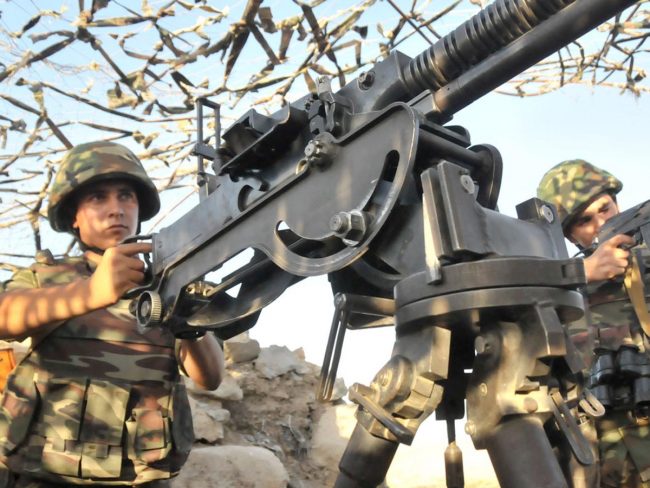
In April 2018, Armenia’s armed forces 2,842 times violated the ceasefire in various directions along the line of contact between Armenian and Azerbaijani troops, according to APA’s calculations based on the reports confirmed by the Azerbaijani Defense Ministry.
Armenians were using large-caliber machine guns, grenade launchers, sniper rifles and 60-mm mortars while shelling the Azerbaijani army positions.
In April, the Azerbaijani army positions located in the districts of Gazakh, Tovuz, Aghstafa, Gadabay, Tartar, Aghdam, Fuzuli, Jabrayil, Khojavend, Goranboy were shelled by Armenia’s armed units.
The Azerbaijani Army was in full control of the operational situation along the entire line of contact last month.
The Azerbaijani army shot down an Armenian quadcopter as it attempted to fly over the Azerbaijani positions at the frontline near Azerbaijan’s Terter district in April.
The Nagorno-Karabakh conflict entered its modern phase when the Armenian SRR made territorial claims against the Azerbaijani SSR in 1988.
A fierce war broke out between Azerbaijan and Armenia over the Nagorno-Karabakh region of Azerbaijan. As a result of the war, Armenian armed forces occupied some 20 percent of Azerbaijani territory which includes Nagorno-Karabakh and seven adjacent districts (Lachin, Kalbajar, Aghdam, Fuzuli, Jabrayil, Gubadli and Zangilan), and over a million Azerbaijanis became refugees and internally displaced people.
The military operations finally came to an end when Azerbaijan and Armenia signed a ceasefire agreement in Bishkek in 1994.
Dealing with the settlement of the Nagorno-Karabakh conflict is the OSCEMinsk Group, which was created after the meeting of the CSCE (OSCE after the Budapest summit held in December 1994) Ministerial Council in Helsinki on 24 March 1992. The Group’s members include Azerbaijan, Armenia, Russia, the United States, France, Italy, Germany, Turkey, Belarus, Finland and Sweden.
Besides, the OSCE Minsk Group has a co-chairmanship institution, comprised of Russian, the US and French co-chairs, which began operating in 1996.
Resolutions 822, 853, 874 and 884 of the UN Security Council, which were passed in short intervals in 1993, and other resolutions adopted by the UN General Assembly, PACE, OSCE, OIC, and other organizations require Armenia to unconditionally withdraw its troops from Nagorno-Karabakh.
